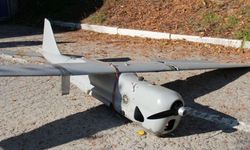The backdrop of this sophisticated operation is a high-stakes conflict where technological superiority can tilt the balance of power. As the Russian military continues to refine and advance its electronic warfare capabilities, the need for a countermeasure has become increasingly urgent. The F-16s, long celebrated for their versatility and combat effectiveness, were about to receive a significant overhaul to meet these new challenges head-on.
The heart of the upgrade lies in the realm of electronic warfare, a field where success is often defined by the ability to outsmart and outmaneuver adversaries in the digital domain. The U.S. Air Force squadron applied its expertise to enhance the electronic warfare systems on the F-16s, ensuring that these jets could not only contend with but decisively counteract the sophisticated threats posed by Russian technology.
This undertaking involved meticulous tinkering with the F-16s’ onboard systems, a process that would make even the most seasoned tech wizard’s head spin. The squadron focused on fortifying the jets' electronic countermeasures, improving their radar systems, and enhancing their communication security. The goal was to make the F-16s resilient against jamming, spoofing, and other forms of electronic attack that have become increasingly common in modern warfare.
But the enhancements weren't merely about keeping up with current threats; they were about anticipating and preparing for future challenges. The U.S. Air Force squadron’s approach was akin to a chess grandmaster anticipating an opponent’s moves several steps in advance. They scrutinized every potential vulnerability and addressed it with an array of sophisticated technological solutions. This proactive mindset is crucial in a conflict where the battlefield is as much about information and electronic dominance as it is about physical combat.
The collaboration between the U.S. and Ukrainian forces in this technological upgrade also highlights the broader strategic partnership between the two nations. By equipping Ukraine with such advanced capabilities, the U.S. is not just providing military aid; it is shaping the future of aerial combat in a way that could have far-reaching implications for global military strategy. The enhanced F-16s represent a significant leap forward in Ukraine's ability to defend itself and project power, altering the dynamics of the ongoing conflict.
Moreover, this initiative serves as a testament to the evolving nature of military alliances in the 21st century. In an era where information and technology play pivotal roles in conflict, the integration of advanced systems and collaborative efforts between allied nations are becoming increasingly vital. The U.S. Air Force's role in this process underscores the importance of innovation and adaptability in maintaining strategic superiority.
As the F-16s take to the skies with their newly upgraded systems, they embody not just technological advancement but also a powerful message of resilience and cooperation. The upgraded jets are now better equipped to handle the complexities of modern electronic warfare, reflecting a broader trend of adapting and evolving in response to shifting threats.
In essence, the U.S. Air Force's intervention in upgrading Ukraine's F-16s represents a significant milestone in the realm of electronic warfare. It is a vivid illustration of how technology and strategy are intertwined, and how international partnerships can drive advancements that redefine the capabilities of modern military forces. As the conflict progresses, the enhanced F-16s will undoubtedly play a crucial role, symbolizing both the tangible and strategic gains achieved through this high-tech collaboration.














